By Ivan Viehoff
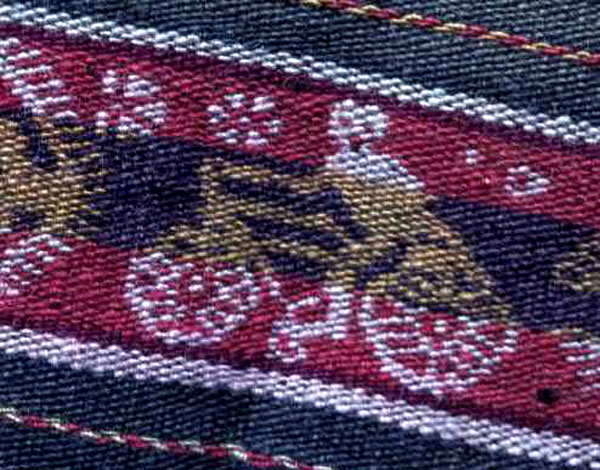
Gringo
By Ivan Viehoff

Gringo
I am a Gringo on a Bicycle. Once I thought I was a Cyclist, but I have learned I am a Gringo on a Bicycle. In Argentina I meet Marc, the Frenchman. He wants to climb mountains and cross deserts. He wants to fight rough roads and gradients, wind and sun, heat and cold. That is why he is on the road in the desert with his heavy load. I will do these things also, but it is not why I am there. For me the road is the route between places and cultures, and the road is the place itself. Marc rides. I travel. Marc is a Cyclist. I am a Gringo on a Bicycle.
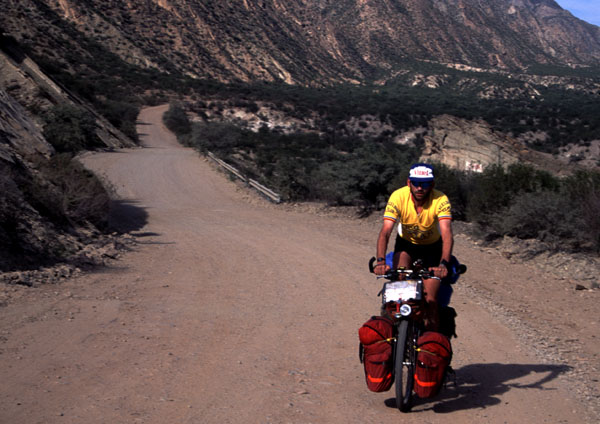
Marc
Aconcagua
I arrive in north-west Argentina at 3,185m, the exit from the 4km tunnel
at the top of Los Libertadores pass from Santiago in Chile. On this
side of the tunnel it isn’t
snowing, but I have to scrape the ice off my rims before I can descend.
Frozen into bottom gear, all I can do is freewheel. Shortly there
is a view of Aconcagua,
claimant to be the highest of the Americas. But more amazing
is the natural bridge, Puente del Inca. From here are two days of
stunning descents through canyons
to Mendoza.
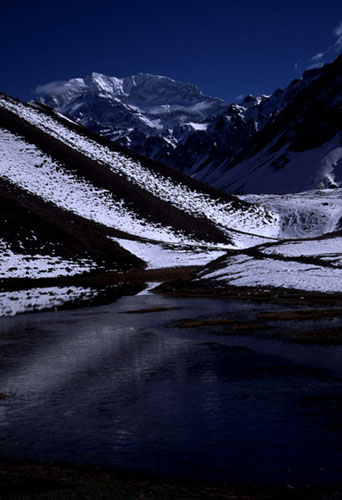
Aconcagua
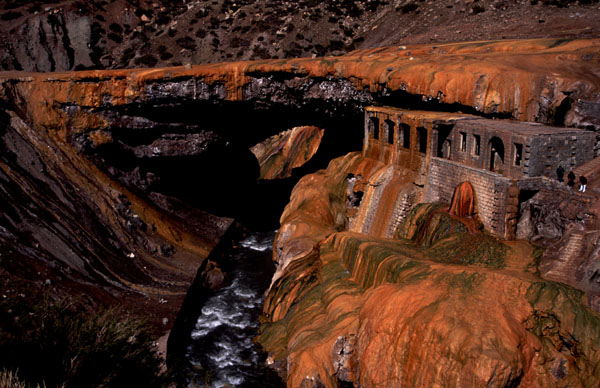
Puente del Inca
Monte
I head rapidly north to the city of San Juan. No sooner am I out
the other side than I am in the monte. In Argentina “monte” means
desert, and Monte is the name
of this desert. Two or three downpours a year provide enough
for a covering of thorny trees and cactus. Now late autumn, the temperature
still gets up to 35°C.
Sometimes I ride two days between water sources. So I carry large
amounts of water and camp out in the desert. I have regular punctures,
because thorn clippings
are used instead of orange cones.
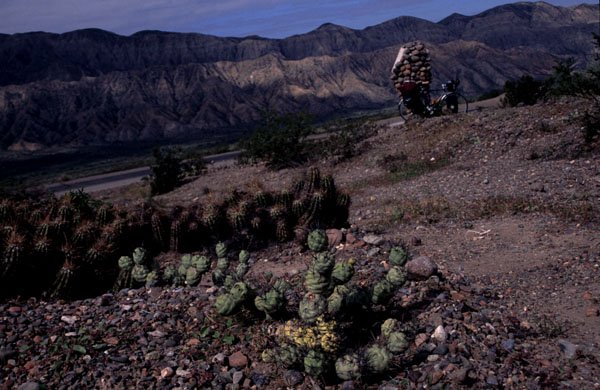
In the Monte
Colour
Unknown to me on the straight desert road, Marc the French cyclist gets me in his sights. An hour later he catches up. At Jáchal he wakes me before dawn and we ride 145km until it is completely dark. Passing a beautiful and unexpected lake, we climb the unpaved Cuesta de Huaco for surreal views.
Late in the day, we make another unpaved pass to Villa Unión
with amazing rock colours. He spurns my offer to share my tent.
Without changing out of his lycra,
he gets into his sleeping bag and braves the nightly frost on a picnic
table.
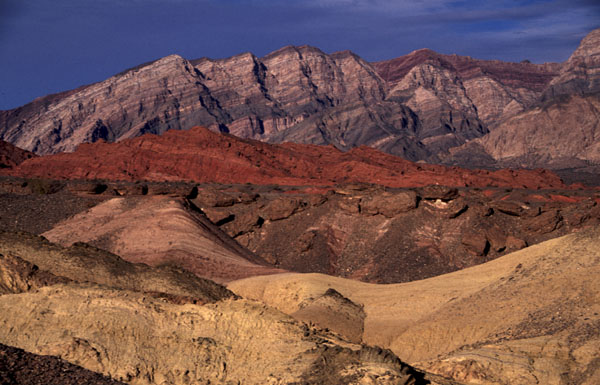
Desert colours
Cactus
I have a day off for repairs and recovery, and Marc chases off after
the schedule which is still ahead of him. I climb the unpaved Cuesta
de Miranda at my own
pace. I have my first sight of giant cardón cactus in
the badlands before the climb. I find a streamside campsite on the
descent, with fresh water provided by snowmelt from the 6,000m Sierra de
Famatina far above. I am scared out of my tent, stick in hand, when
a fox pushes over an oil-drum searching through the
rubbish.
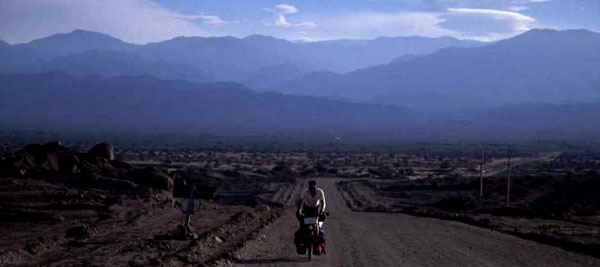
Marc near Guandacol
Cult
There is an emergency source of water in the desert, though you risk
a curse of bad luck if you dare. Many road accident shrines are dedicated
to Difunta Correa.
Correa died of thirst, while following her husband’s battalion in the
19th century Desert War against the native population. But miraculously
her infant survived,
apparently suckling at the dead woman’s breast. Passers-by leave
bottles of water at her shrines so she will not thirst again in the desert.
Today they leave her
spare car parts too.
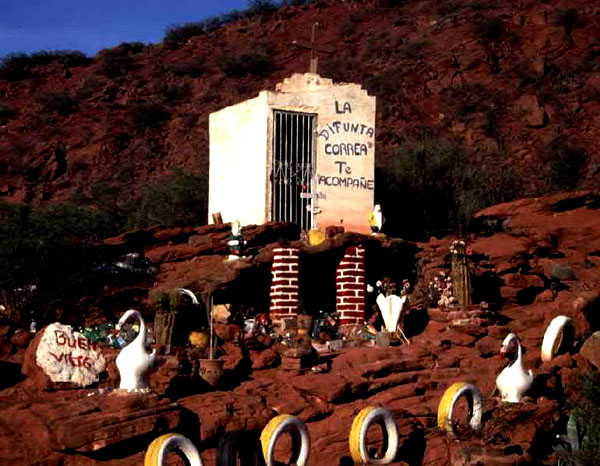
Shrine to Difunta Correa
Catamarca
A couple more days brings me into beautiful Catamarca province.
I cycle from London to Bethlehem in 45 minutes, for such, in Spanish, are
the names of the
towns. On a sandy road in the desert goatherds invite me to their
encampment to share Sunday lunch of goat stew. The men gather round
a table to eat it, while the
old woman who cooked it sleeps in a cane shelter.
Ostrich
A pick-up overtakes me, guns sticking out in all directions. “What
are you hunting?” I ask. “Ostriches,” they reply, “have you seen
any?” I saw rheas, American
“ostriches”, in Patagonia 3,000km to the south. There are no
ostriches in places where men may drive with guns. Nearby is a sign
remote from anywhere. “Do not
hunt the ostriches.”

Cardón cactus
Poverty
Approaching Andalgalá is a ribbon of one-room shacks of bare
breeze-block. Small children run around with bare bottoms.
The Governor of Catamarca seems
impervious to charges of murder and corruption. Output has fallen
30%. The province is bankrupt and mints its own banknotes to pay
its bills. Remote in the
desert, in Andalgalá, the square is still a shady arbour of
blossoming trees and songbirds. There are still bourgeois villas
with flower-filled gardens and high walls.
But the cafés are quiet and some shops have empty shelves.
“They shouldn’t hunt the ostriches”, says the waiter, “but it does taste
good.” A new conveyor to the
mine will increase unemployment in Andalgalá. People are
leaving town to herd goats and hunt ostriches.
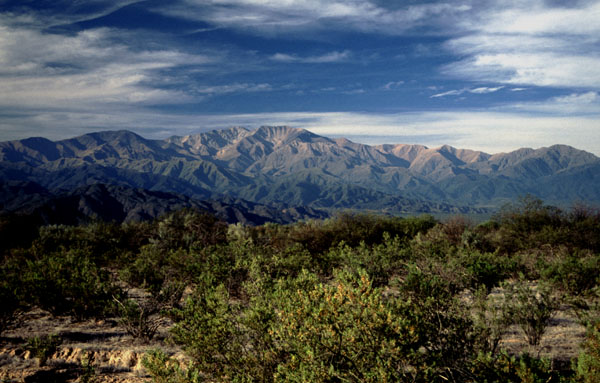
No ostriches here
Edge
I climb another cactus-covered pass, but there is no immediate descent.
I skid on a sandy-soft road over a plateau of pasturage, ever moister as
the cactus are left
behind. There is cold drizzle in the air, so close to the heat
of the desert. Next day I climb a muddy pass and descend through
heavy rain into fields of Tucumán
with their sugar cane, oranges and pineapples. The edge of the
desert is a narrow place. I will travel on, back over the edge.
Ivan Viehoff
Published in the Rough-Stuff Journal March 2001
